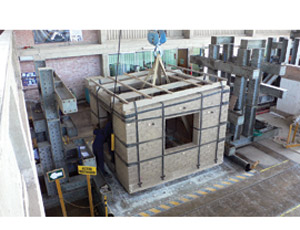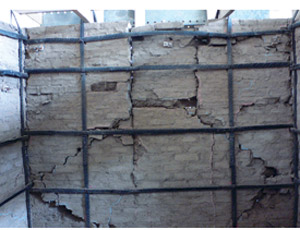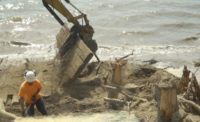If New Zealand university professor Andrew Charleson has his way, giant rubber bands cut from used tires would strap together new and existing adobe houses the world over, saving lives and avoiding injuries by preventing the houses from collapsing in earthquakes. Having tested his belt-and-suspenders concept, Charleson intends to seek funding to implement the approach as soon as the construction manual for the banding, currently under review by the World Housing Encyclopedia, is finished.


Adobe, made mainly from local clay and water with short lengths of straw and some sand to control shrinkage cracking, is considered the only affordable building material for tens of millions of people across Latin America, the Middle East and parts of Asia. “For many remote communities, it is simply the only building option, as transporting alternative materials from distant cities would be prohibitively expensive,” says Charleson, an associate professor at Victoria University’s School of Architecture, Wellington, and the head of the school’s Earthquake Hazard Centre. To date, the school has been supporting the project.
Although adobe bricks may be an affordable and local building material, they do not perform well in earthquakes because of their inherently brittle nature. That brittleness, combined with poor construction standards and minimal awareness of seismic design, makes adobe houses disasters-in-waiting, he adds.
Charleson’s system, in development for about five years, involves threading rubber straps, spirally cut from used car tires, through holes drilled in walls of adobe houses. It is appropriate for new construction or retrofits. A retrofit can cost less than $500 for a small, four-room house, assuming the straps are provided free of charge and the occupant does the work. Most of the cost is for paint to refinish the walls.
Initial static tests on dry-stacked brick walls were carried out at Victoria University. A full-scale shake-table test of a single-room house and two static wall tests were completed in 2008 at Catholic University in Lima. The tests showed the straps prevent collapse, but not damage, says Charleson. The technique has not yet been applied to any houses other than the test house.
Charleson’s idea is for developed nations to cut straps from discarded tires that are not too badly damaged or worn and then donate and transport them to developing nations. Houses would be strengthened at minimal cost with a recycled material that is simple to install and plentiful in supply, says Charleson.
After six-meter-long continuous straps have been cut from tire treads, they are connected to each other on-site using a specially developed, yet simple, nailed joint. Once the walls of a house have been built, holes are either drilled or formed to allow the straps to wrap around the end of each wall.
The straps are wrapped horizontally around the house walls at a maximum of 600 millimeter on center, vertically. Vertical straps, at approximately 1.2 m on center, pass under or through the foundations, rise up the house’s sides and are nailed to the roof timbers. The straps are not pinned to the walls; instead, they are tied together through the walls at the junctions of the vertical and horizontal straps, “belting” the house inside and out.
The strap system is ideal for adobe, which is a relatively soft material, but it is not ideal for concrete-block houses, which are harder and more difficult to drill. Further, the system is not appropriate for developed nations with higher seismic design standards, says Charleson.


Post a comment to this article
Report Abusive Comment